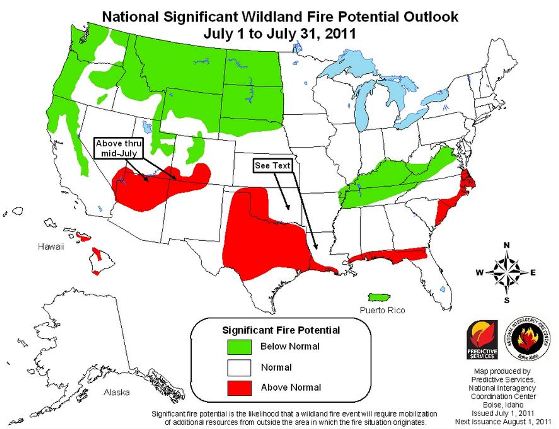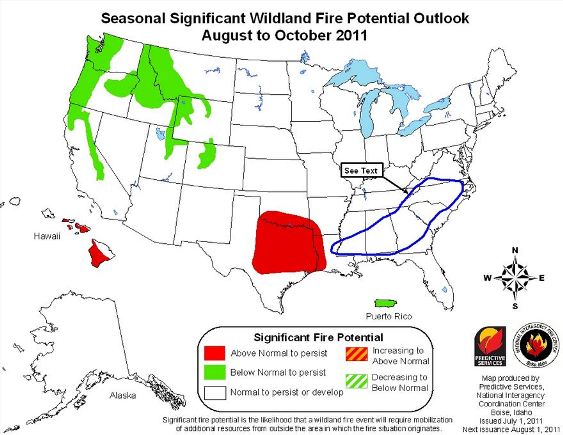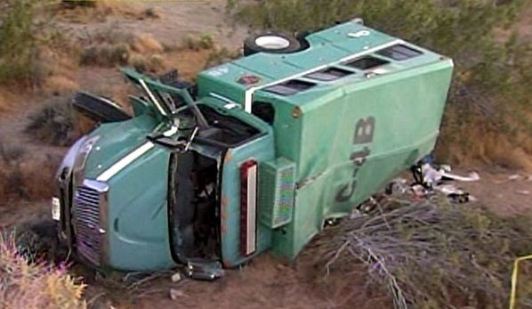The Predictive Services section at the National Interagency Fire Center has issued their National Wildland Significant Fire Potential Outlook for July through October, 2011. If this turns out to be accurate, it looks like there will be average or below average wildfire potential beginning in July, except for Texas — of course. When it comes to wildfires over the last 8 months or so, if it were not for bad luck, Texas would have no luck at all.
Firefighters in Arizona and New Mexico have both been extremely busy during the last 30 days, with both states experiencing record-breaking fires, larger than any in recorded history. Here’s what the outlook says about that area:
Southwest: Above normal significant fire potential is expected across the northwestern one-third to one-half of Arizona as well as sections of northwestern New Mexico in July. Much of the remainder of the Southwest will transition from above normal to normal during the first 7-10 days of the month. Seasonal trends indicate moisture under the subtropical ridge will produce periods of increased rainfall over the region. However, conditions in the northwestern parts of both Arizona and New Mexico may linger in high fire potential past mid-month until deeper moisture and precipitation can migrate to those areas and reduce the threat. Temperatures are expected to be above normal for most of the area while precipitation is expected to be normal with slightly below normal over western Arizona.
Normal significant fire potential is expected for the entire Southwest for August through October. Normal to slightly above normal monsoon activity could produce above normal precipitation for the period, especially near the continental divide and eastward. The western Arizona lowlands could see normal precipitation. Temperatures are expected to be normal to slightly above normal through the period.













